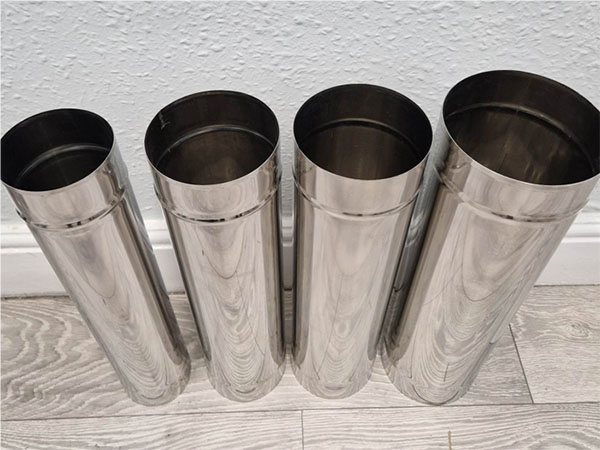What is a stainless steel smoke pipe?
Stainless steel smoke pipes are a type of
stainless steel pipe used to connect wood stoves, gas stoves or other heating devices to chimney systems. Its main function is to safely guide the smoke produced by combustion out of the room, preventing the backflow of smoke or fire hazards.
These pipes are commonly used in residential, commercial or industrial heating systems, especially for wood stove, pellet stove, fireplaces fireplace and gas stoves.

Common types include:
Single-layer stainless steel smoke Pipe (Single Wall Pipe) : Simple structure and low price. It is suitable for short-distance connection between stoves and chimneys, and it is necessary to maintain a greater safety distance from combustibles.
2. Double-layer or triple-layer insulated smoke tubes: These smoke tubes have an insulating layer, and the outer layer is not prone to overheating. It is more suitable for wall-penetrating, ceiling-penetrating or long-distance smoke exhaust systems, featuring better safety and higher energy efficiency.
3. Flexible stainless steel flue pipe: This type of flue pipe can be bent and is suitable for irregular Spaces or flue duct renovations. It is commonly found in the inner systems of old chimneys.
The material is usually made of austenitic stainless steel such as 304 or 316. Compared with traditional galvanized steel pipes and aluminum alloy pipes, stainless steel pipes have the following significant advantages:
Wide temperature adaptability: It can operate stably for a long time within the temperature range of -40℃ to 600℃, and is not prone to deformation or cracking.
Outstanding corrosion resistance and oxidation resistance: High-grade stainless steel (such as 304, 316L) is not prone to rust or oxidation in high-temperature flue gas and humid environments, significantly extending its service life.
Diversified structural forms: including straight pipes, elbows, tees, flange connections, adjustable movable joints and other components, it ADAPTS to complex pipeline designs and meets the needs of multiple scenarios in households, commercial and industrial Settings.
Modular design: Standardized interface and sealing ring design, quick assembly, and the length and Angle of pipe sections can be freely combined according to on-site requirements, shortening the installation period.
Optional additional functions: Supports upgraded configurations such as built-in insulation layers, sound-absorbing materials or temperature sensors to achieve energy conservation, noise reduction and intelligent monitoring.
Installation and Maintenance Guide
Preliminary selection: Based on the power of the smoke exhaust equipment and the length of the flue, choose the appropriate diameter (80mm-500mm available) and wall thickness (0.5mm-1.5mm).
Standardized installation: Pay attention to the integrity of the sealing gasket at the interface to avoid smoke leakage. When installing, keep it level or slightly tilted to ensure that the condensate water flows out naturally.
Regular inspection and cleaning: It is recommended to clean the interior of the flue once a year to remove carbon deposits and dust, thereby extending the service life of the stainless steel flue pipe. When the flue pipe is not used for a long time, it should be sealed to prevent rainwater or small animals from entering.
Summary
Stainless steel smoke pipes have become the mainstream choice for modern stove smoke exhaust systems due to their superior high-temperature resistance, corrosion resistance, safety and aesthetics. Selecting the appropriate model and material, scientific installation and regular maintenance are the keys to ensuring the safe and efficient operation of the stove.
Read more: The specifications of 316 stainless steel pipes
